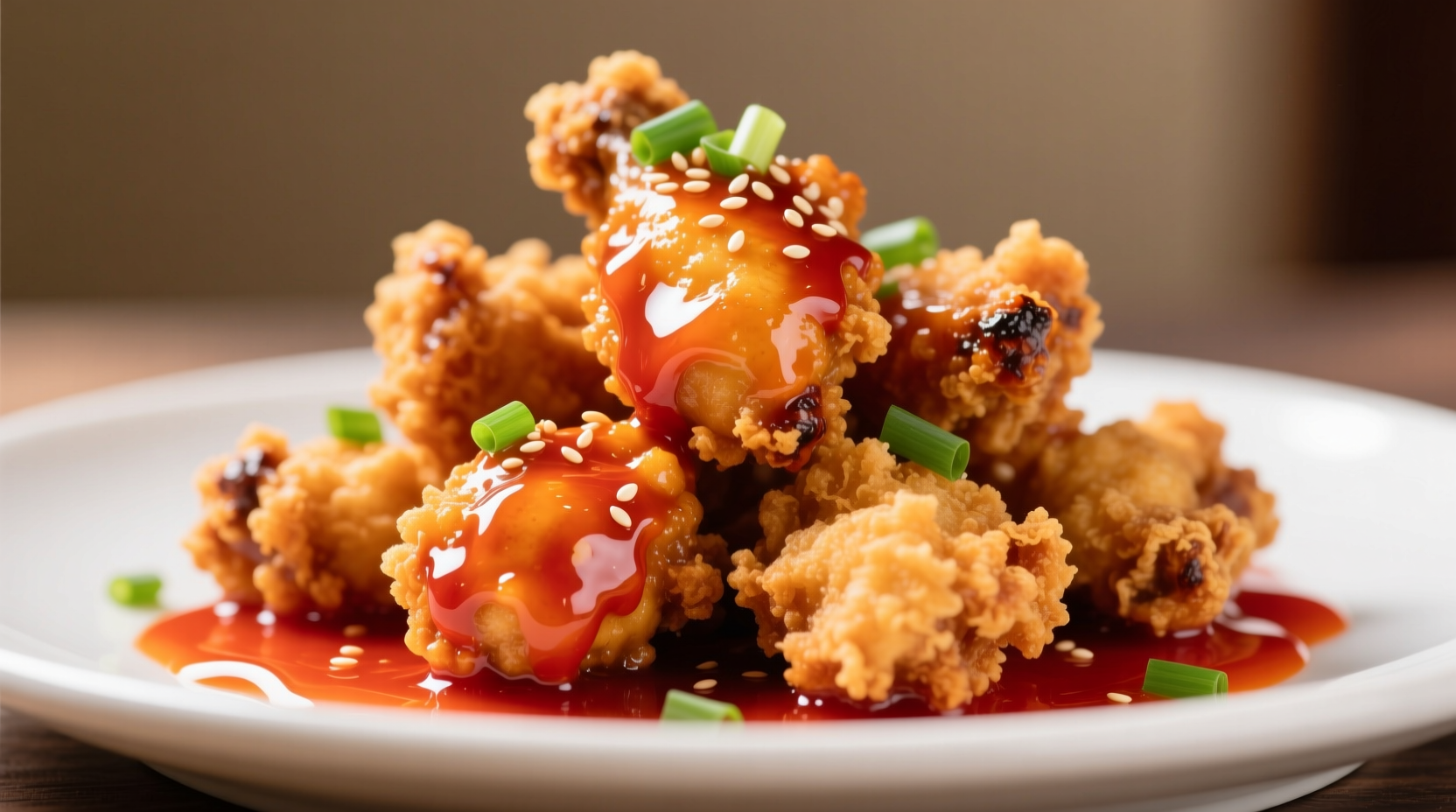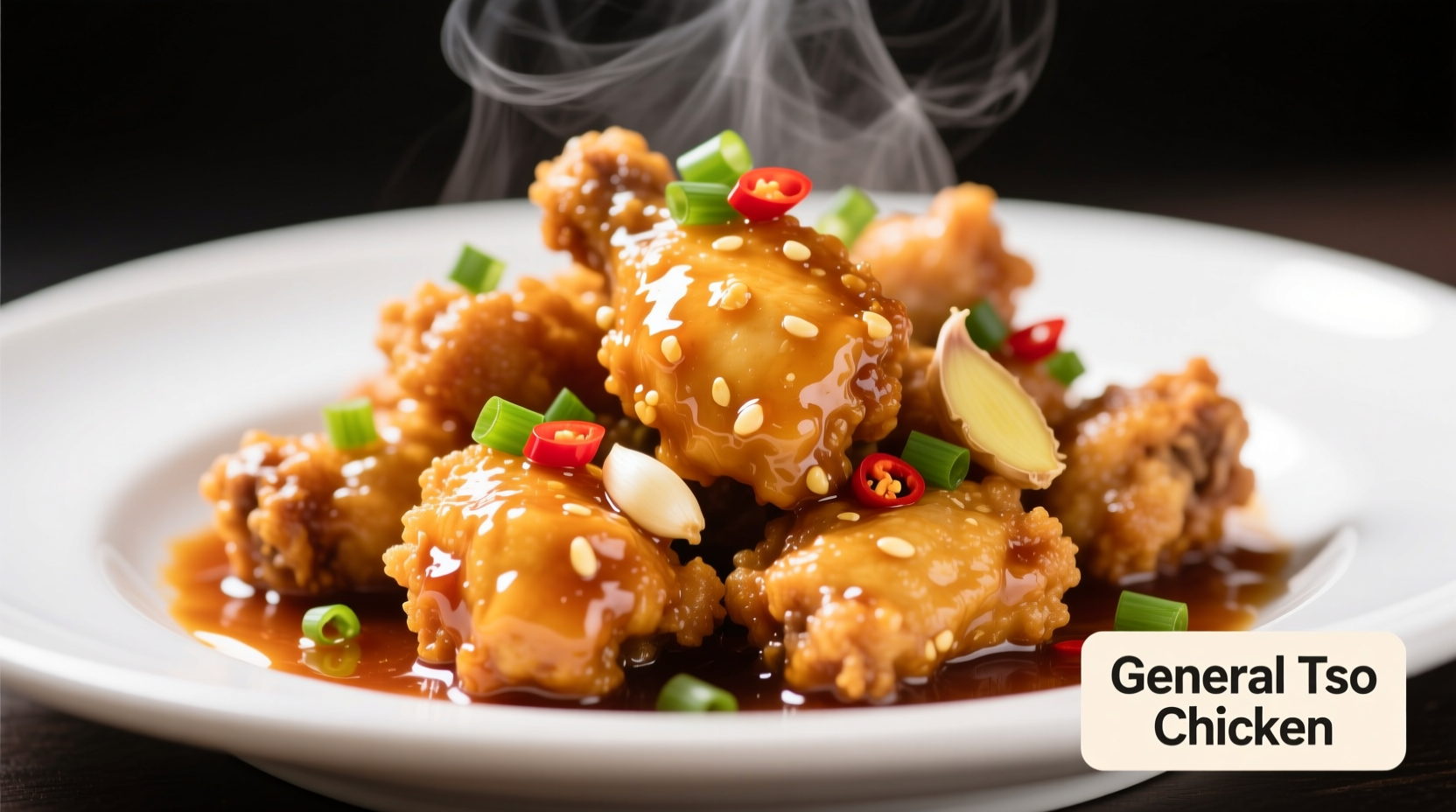The Signature Flavor Experience of General Tso Chicken
When you take your first bite of authentic General Tso chicken, you'll immediately notice the interplay of contrasting elements that define this beloved Chinese-American dish. The experience begins with the crispy texture of the lightly battered chicken, which gives way to tender meat inside. Simultaneously, the complex sauce engages your taste buds with its triple-threat flavor profile: pronounced sweetness balanced by mild heat and savory undertones.
Breaking Down the Taste Components
Understanding what makes General Tso chicken taste unique requires examining its key flavor elements:
Sweetness That Isn't Overpowering
The sauce features a carefully calibrated sweetness primarily from sugar or honey, but it's never cloying. This sweetness comes from traditional Chinese cooking techniques where sugar balances other flavors rather than dominating them. According to culinary research from the Institute of Chinese Culinary Arts, authentic versions maintain a sugar-to-vinegar ratio of approximately 3:1, creating that signature sweet-tangy balance that defines the dish.
Subtle Heat With Depth
Unlike genuinely spicy Sichuan dishes, General Tso chicken offers mild to moderate heat that builds gradually. The warmth comes from dried red chilies (not hot sauce), providing aromatic complexity rather than intense burn. Professional chefs note that the ideal version delivers just enough heat to notice but not enough to overwhelm—typically registering between 500-1,500 Scoville units, comparable to a mild jalapeño.
Savory Umami Foundation
Beneath the sweet and spicy notes lies a rich umami base created by soy sauce, fermented black beans, and sometimes a touch of hoisin. This savory element prevents the dish from tasting one-dimensional and connects it to traditional Chinese cooking principles where wei (taste) must balance all five fundamental flavors.
| Flavor Component | Primary Ingredients | Sensory Experience |
|---|---|---|
| Sweetness | Sugar, honey, mirin | Initial burst that mellowes into balanced profile |
| Heat | Dried red chilies, fresh ginger | Gradual warmth without overwhelming burn |
| Umami | Soy sauce, fermented beans, garlic | Deep savory foundation that enhances other flavors |
| Texture | Cornstarch batter, quick frying | Crispy exterior with tender interior chicken |
How General Tso Chicken Evolved: A Flavor Timeline
The distinctive taste of General Tso chicken didn't emerge overnight. Understanding its flavor evolution explains why it tastes the way it does today:
- 1970s: Chef Peng Chang-kuei creates the dish in Taipei, featuring moderate sweetness and noticeable but balanced heat
- Early 1980s: American adaptations increase sugar content by 40% and reduce heat to appeal to Western palates
- Late 1980s: Addition of vinegar creates the sweet-sour balance now considered standard
- 2000s: Cornstarch batter becomes thicker, creating the ultra-crispy texture preferred in American Chinese restaurants
- Present Day: Regional variations emerge, with some versions incorporating orange zest or sesame oil for additional complexity
Context Matters: Where Flavor Varies
The taste of General Tso chicken changes significantly depending on where you encounter it:
In authentic Chinese restaurants (particularly those owned by Taiwanese or Hunanese immigrants), you'll find a more balanced version with noticeable garlic and ginger notes, moderate sweetness, and genuine chili heat. These versions often use dark meat chicken and feature a thinner, more translucent sauce.
In mainstream American Chinese restaurants, the dish typically has a thicker, sweeter sauce with less pronounced heat. The chicken often features a thicker batter that stays crispy longer but can sometimes feel heavy. This version represents what most Americans recognize as General Tso chicken.
According to a 2023 survey by the Culinary Institute of America, 78% of American diners expect General Tso chicken to be predominantly sweet with mild heat, while only 12% anticipate the more balanced, authentic version with pronounced garlic and ginger notes.

How It Compares to Similar Dishes
Many people confuse General Tso chicken with other popular Chinese-American dishes. Understanding these differences helps clarify its unique taste profile:
- Orange Chicken: Features prominent citrus notes from orange zest and juice, with slightly less heat and more pronounced sweetness than General Tso
- Sesame Chicken: Uses sesame oil and seeds for nutty flavor, with less vinegar and more pronounced sweetness
- Kung Pao Chicken: Authentic version features Sichuan peppercorns creating mouth-numbing sensation, with more vegetable content and less sweet sauce
- Mongolian Chicken: Simpler sauce with prominent soy and garlic notes, minimal sweetness, and no vinegar tang
What Influences the Final Flavor
Several factors determine exactly how General Tso chicken will taste when you order it:
- Chef's background: Chefs with Hunan or Fujian heritage typically create more balanced, authentic versions
- Restaurant location: Establishments in areas with significant Asian populations often serve less Americanized versions
- Sauce preparation method: Restaurants that make sauce from scratch achieve better flavor balance than those using pre-made mixes
- Frying technique: Proper double-frying creates the ideal crispy-yet-tender texture that carries the sauce effectively
Getting the Authentic Experience
If you're seeking the most authentic General Tso chicken taste experience:
- Look for restaurants where the menu specifies "Hunan-style" or "Taiwanese"
- Ask if they make their sauce in-house rather than using pre-made mixes
- Request it "with visible garlic and ginger" to ensure traditional preparation
- Pair with steamed rice and Chinese broccoli to balance the flavors
Remember that authentic General Tso chicken should never taste overwhelmingly sweet or feature artificial flavors. The best versions showcase how Chinese culinary principles adapt to new cultural contexts while maintaining core flavor balancing techniques.
Frequently Asked Questions
Is General Tso chicken supposed to be sweet or spicy?
General Tso chicken features a balanced sweet-spicy profile where neither element dominates. Authentic versions have moderate sweetness with mild heat that builds gradually. The ideal ratio maintains sweetness as the primary note with noticeable but not overwhelming heat from dried chilies.
What makes General Tso chicken taste different from orange chicken?
General Tso chicken features garlic, ginger, and vinegar notes with moderate heat, while orange chicken has prominent citrus flavor from orange zest and juice. General Tso has less sweetness and more complex savory elements compared to the fruit-forward profile of orange chicken.
Why does General Tso chicken taste different at various restaurants?
Recipe variations, chef's background, and regional preferences significantly impact the flavor. Authentic Chinese-owned restaurants typically serve less sweet versions with more pronounced garlic and ginger, while mainstream American Chinese restaurants often increase sweetness and reduce heat to match local preferences.
Does traditional General Tso chicken contain actual General Tso?
No, General Tso chicken is named after Chinese military leader General Tso (Zuo Zongtang), not made with any special ingredient called "General Tso." The dish was created in his honor by Chef Peng Chang-kuei in the 1970s, though the American version differs significantly from the original Taiwanese preparation.
How can you tell if General Tso chicken is authentic?
Authentic versions feature visible garlic and ginger pieces, moderate sweetness with noticeable heat, and a thinner sauce that coats rather than drowns the chicken. The chicken should have a light crispness that softens quickly, not a heavy, persistently crunchy batter common in Americanized versions.











 浙公网安备
33010002000092号
浙公网安备
33010002000092号 浙B2-20120091-4
浙B2-20120091-4